
For a young Madi Zhasekenov, summertime on the shoreline of the Aral Sea was an idyllic affair. His three-month school holidays were spent at the port near his home in Aralsk, south-western Kazakhstan, interacting with fishermen hauling in their daily catch.
“We used to fashion fishing lures from hooks and then we would stand along the sea to catch fish,” says Zhasekenov, who is now 58. “I used to catch small and big fish, and we would feed the cats and dogs for fun.”
But by the time he was 17, the water levels of the Aral Sea had dropped and the salinity had risen so rapidly that the freshwater fish that once thrived there could no longer survive. One of the hardest moments for Zhasekenov was when he realised that he needed to buy fish for his family’s daily meals.
“We didn’t know how to buy a fish because we just always used to catch them,” he said. “The first time I went to the market to buy it, it was just a very bad feeling.”
At the opposite end of the Aral Sea, the residents of Moynaq – a robust fishing hub in northern Uzbekistan that employed more than 30,000 people – experienced a similar fate.
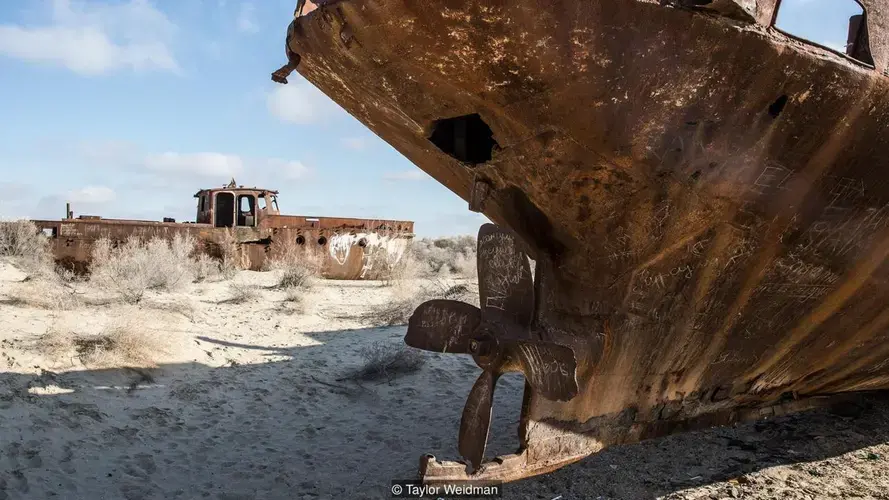
“I was five or six the last time I saw ships in the sea when we went swimming,” says Marat Allakuatov, a 47-year-old former resident of Moynaq.
Today, the seabed has completely dried out in the bustling city, leaving only sandy salt deposits and the rusting husks of abandoned fishing trawlers. The local economy has evaporated along with the water.
“As the sea disappeared, the people staying there became unemployed,” says Allakuatov. He now works in a hotel in Nukus, the capital of the republic of Karakalpakstan, an autonomous region of Uzbekistan that encompasses Moynaq. “The older generation officially lost their hope for the future.”
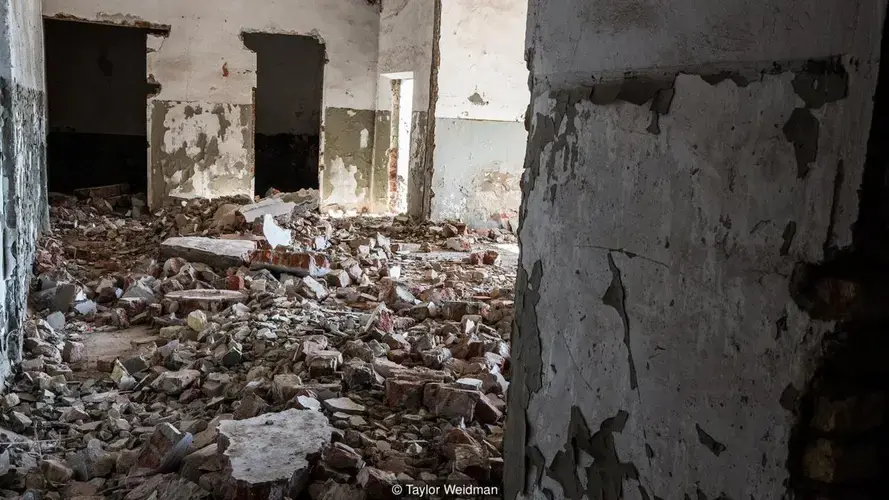
With their fisheries decimated, the communities these two men are part of at opposite ends of the sea faced similar dire fates in the 1990s.
But more than two decades on, their paths have diverged. Today, the North Aral Sea in Kazakhstan has been revived, with water and economy returning to Aralsk. But the South Aral Sea in Uzbekistan is almost completely desiccated, and its residents are choking on the air.
How did the two cities have such different outcomes?
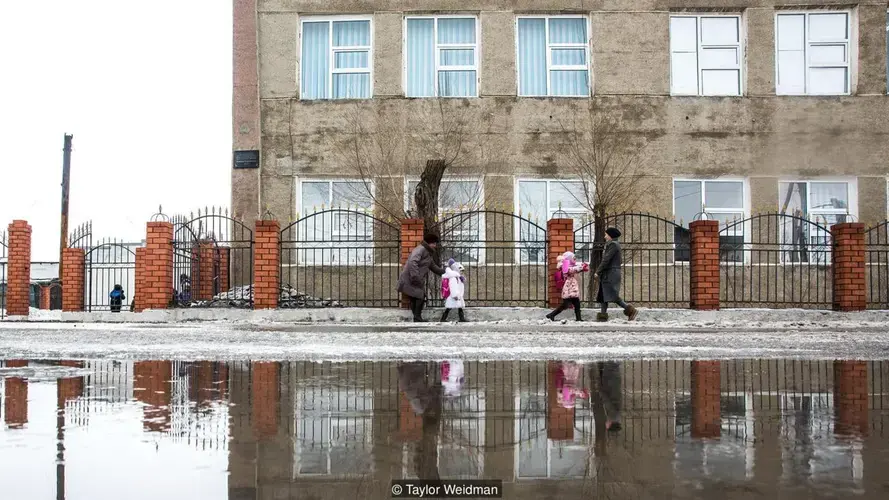
Back from the dead
At more than 67,000 sq km (26,000 sq miles), the Aral Sea was once the fourth-largest freshwater lake in the world. But the Soviet Union’s uncompromising agricultural policies in the 1950s led to water from two rivers – the Amu Darya and the Syr Darya – being diverted away from the sea to irrigate Central Asia’s desert steppes to boost cotton production. Water levels dropped and the once abundant populations of bream, carp and other freshwater fish dwindled with them.
Today, the sea is a 10th of its original size and has almost split in two. Mimicking the shape of a splintered number eight, the North Aral Sea – the top half of the body of water – lies in Kazakhstan. The South Aral Sea, which consist of a strip of water in the west and a dried-out basin in the east, sits in Uzbekistan.
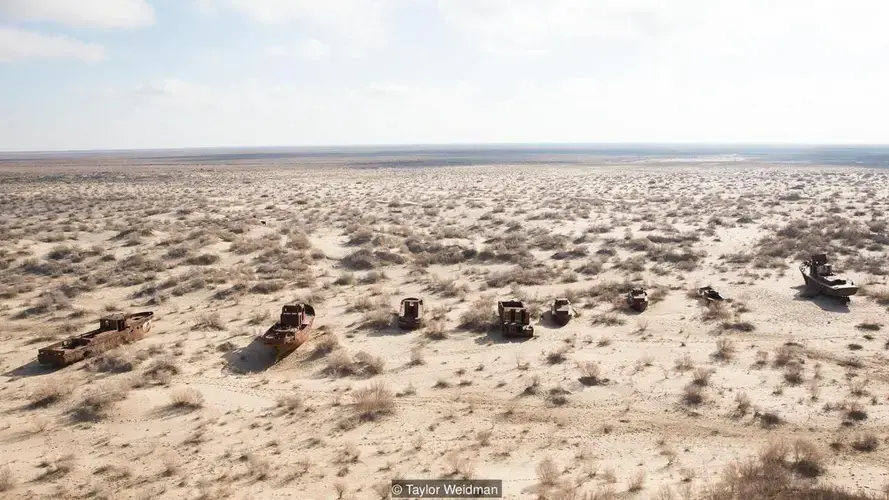
In the 1990s, both bodies of water seemed headed for similar outcomes. But that changed when the World Bank stepped in with an $87m (£66m) rescue project in Kazakhstan.
This included constructing a 12km-long (7.5 mile) dyke across the narrow channel that connects the North Aral Sea to its neighbour to the south, with the aim of reducing the amount of water spilling out into the South Aral Sea. Improvements to existing channels of the Syr Darya river, which snakes northwards from Kazakhstan’s Tian Shan Mountains, also helped to boost the flow of water into the North Aral Sea.
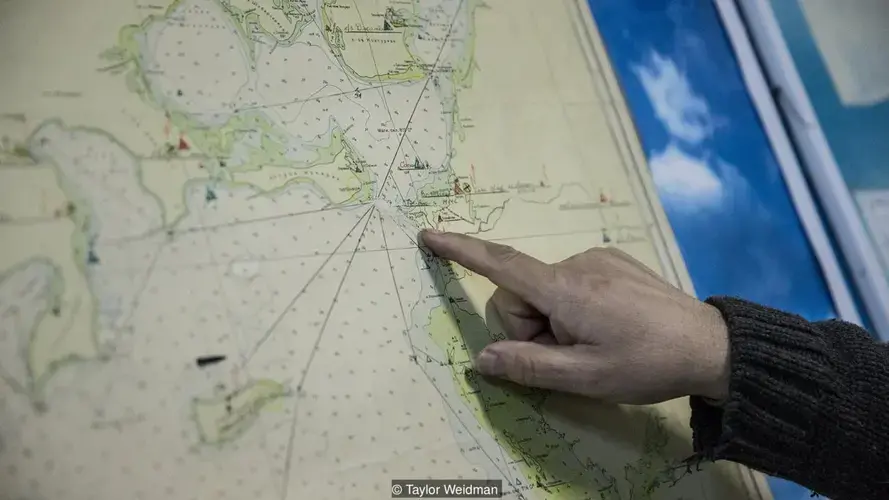
Finished in the summer of 2005, the Kokaral dam – as the dyke is known – surpassed the World Bank’s expectations, leading to an increase of 3.3m (10.8ft) in water levels after seven months, which scientists had previously calculated would take around 10 years.
“At that time, we were not expecting this much flow and the success has been astounding,” says Masood Ahmad, the World Bank team leader who prepared and appraised the project in 2001.
The return of the North Aral Sea has fuelled a revival of the fishing industry in Aralsk. In 2006, the annual fish catch totaled 1,360 tons, which comprised a majority of flounder – a saltwater species that the Kazakhs dislike. By 2016, the Aralsk Fish Inspection Unit recorded 7,106 tons of fish as freshwater species have returned, including pike-perch – which bring in a hefty price for local fishermen – breams, asp, and catfish.
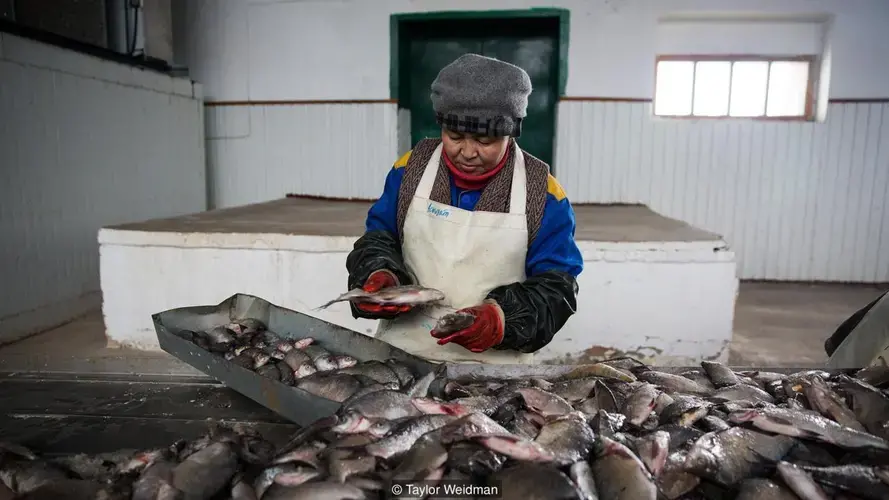
Perhaps surprisingly, the Kazakh government played a key role in this recovery process.
“Most governments usually give priority to generating incomes, like improving irrigation to increase crop production or water management so that they can supply water to cities,” says Ahmad. “Environment and ecology improvements are the last thing that governments give priority to, but the Kazakhs did it.”
Changing fortunes
For Aldanbek Kerinov, the return of the fisheries in the North Aral Sea has allowed him to change careers. He was a taxi driver seven years ago, pulling in 3,000 to 5,000 tenge (£7-11) a day.
Now the 27-year-old works with his two brothers out on the lake. In sub-zero weather in February, they retrieved about 20kg (44lb) of pike-perch from their nets submerged under the frozen surface of the Aral Sea. Extremely popular among Kazakhs, this fish sells for roughly 650 tenge (£1.45) per kilogram to fish factories and buyers.
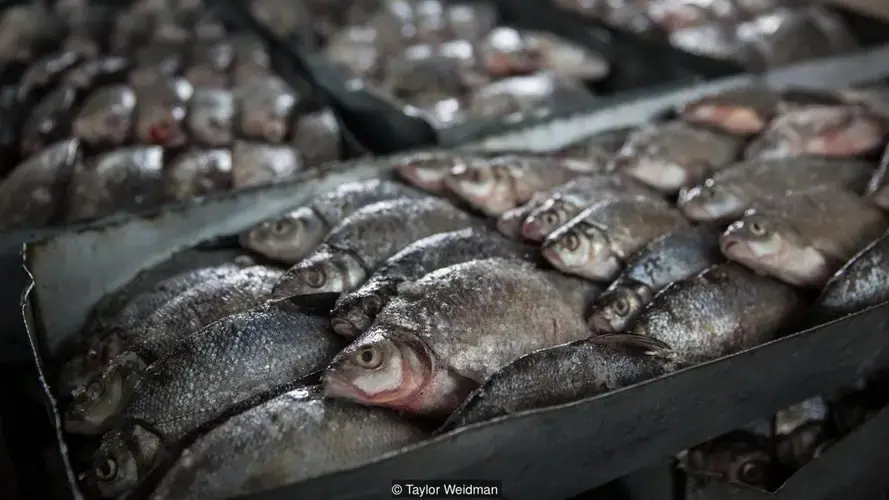
“In the winter, sometimes we will catch about 50,000 tenge [worth of fish] per person” in a single catch, explains Kerinov. “So it would be 150,000 tenge (£335) for the three of us. We prefer to catch even just one pike perch instead of driving a taxi.”
Kerinov was too young to have seen the seawater lapping against the port walls of Aralsk. The shore currently sits about 20km (12 miles) from the town, which means a two-hour drive through the thick winter snow to reach it.
“We are dreaming that one day the sea would reach Aralsk so we don’t have to drive so far,” says Kerinov. “Every day, we would be able to go fishing just from our house.”
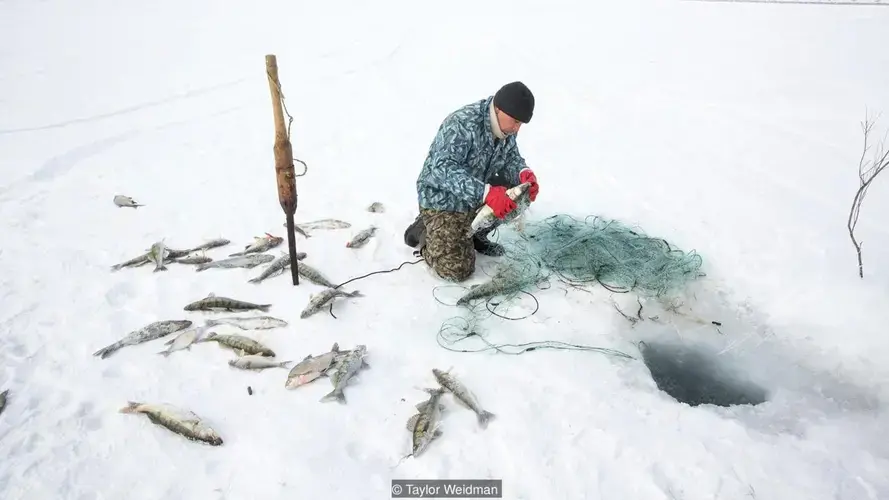
According to Ahmad, this is a real possibility. Due to the improved water flow in the Syr Darya river, roughly 2.7 billion cubic metres (594 billion gallons) of water a year spills over the Kokaral dam and into the southern part of the sea.
“It spills over, it evaporates and it is lost,” he says. “It does not have as much ecological value or benefit. Since the Kokaral dam was built in 2005, over 30 billion cubic metres to date has spilled from the Northern Aral Sea.”
Raising the dyke walls by another four metres would help to keep an additional 15 billion cubic metres of water in the North Aral Sea, he adds. This would extend the area covered by the sea, which currently measures 800sq km (300 sq miles), by another 400sq km (150 sq miles).
“It will increase by 50%,” says Ahmad. “This will take about four, five years.”
Plans to do this were put forward as part of a second phase of the World Bank project, but it has recently stalled. According to the World Bank the project is currently awaiting approval from the Kazakh government to move forward.
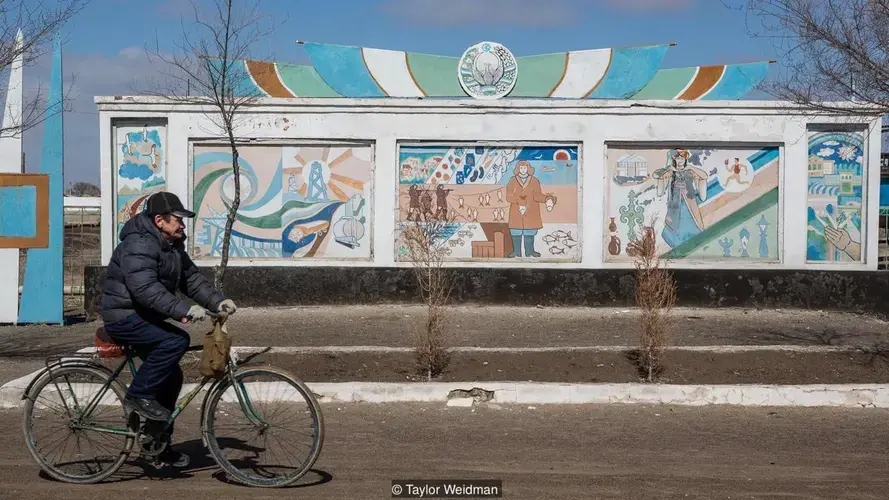
Across the border in Uzbekistan, the story is very different. While the World Bank has worked on some projects to restore the existing lakes around the South Aral Sea, such as Lake Sudoche, it has had less success. The main obstacle appears to be the demand that Uzbeks have for it, as the Amu Darya river flows are used upstream for agricultural purposes and does not have enough water flow to fill up the South Aral Sea.
Greater reliance on cotton production for income has also hindered attempts to restore the South Aral Sea to its former glory. From 1930 to 1990, Uzbekistan provided more than two-thirds of the cotton produced in the Soviet Union. It ranked fifth out of 90 cotton-producing countries, and it was the second-largest exporter of cotton fibre to the US. Today, Uzbekistan is still the fifth-biggest cotton exporter in the world after the US, India, Brazil, and Australia.
“The government could have done the rehabilitation of the Southern Aral Sea but then they would have put a lot farmers who are using water for irrigation out of employment,” says Ahmad. “You cannot give up something that gives you income.”
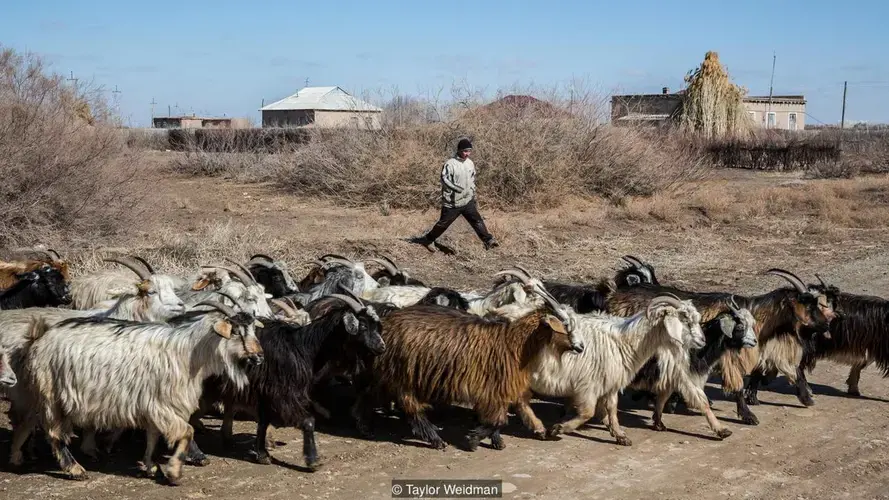
In 2015, the eastern basin of the South Aral Sea completely dried up and the water never returned.
“It’s a pity,” laments Allakuatov. “I think the economic situation is more of a priority right now than keeping the water or nature or environment.”
Salt storms
There are still jobs available in Moynaq. The dried-up seabed has provided new opportunities for natural gas companies hoping to tap into the resources beneath the desiccated ground.
But although the exposed sea floor has allowed this new industry to hold unemployment in check, it is also creating new worries for the city’s residents.
With such a large body of water now greatly reduced in size, this has affected the climate in the region, changing temperatures and rainfall. The exposed seabed also contains a lot of salt and sediment, while the use of fertilisers by cotton producers over the decades has concentrated these harmful chemicals in the soil.
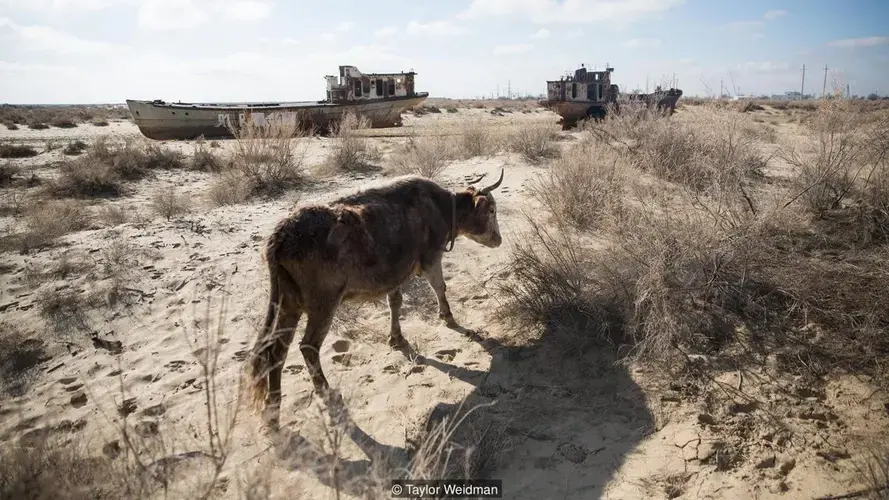
When whipped up by strong winds, choking dust storms are formed, enveloping nearby settlements. Studies have linked sustained exposure to this dust to an increase in respiratory diseases in people living nearby.
“There is dust coming up from the bed of the Aral Sea, so this salt is spreading everywhere – not only in the territory of Karakalpakstan, but also in the northwest part of Turkmenistan,” says Allakuatov. “The people are suffering from the salty land.”
Across the border in Aralsk, the sea continues to be at the centre of Zhasekenov’s life. As the director of the Aralsk Regional Museum and Fishermen Museum – a position he inherited from this late father – Zhasekenov knows every bit of history concerning the sea, and dreams of the water flowing back to the old port, where his museum is located.
For now, he is happy that the return of the North Aral Sea has revived some former pastimes, and remains optimistic that the sea will be restored to its previous glory.
“Today, if I take a shortcut, the sea is only 14km (8.7 miles) away and I will be able to get to some fishermen’s home. There, the fishermen will give us some fish. This reminds me of my childhood,” he says. “I believe I will see the water in the port again.”
Serik Dyussenbayev contributed reporting to this story.








